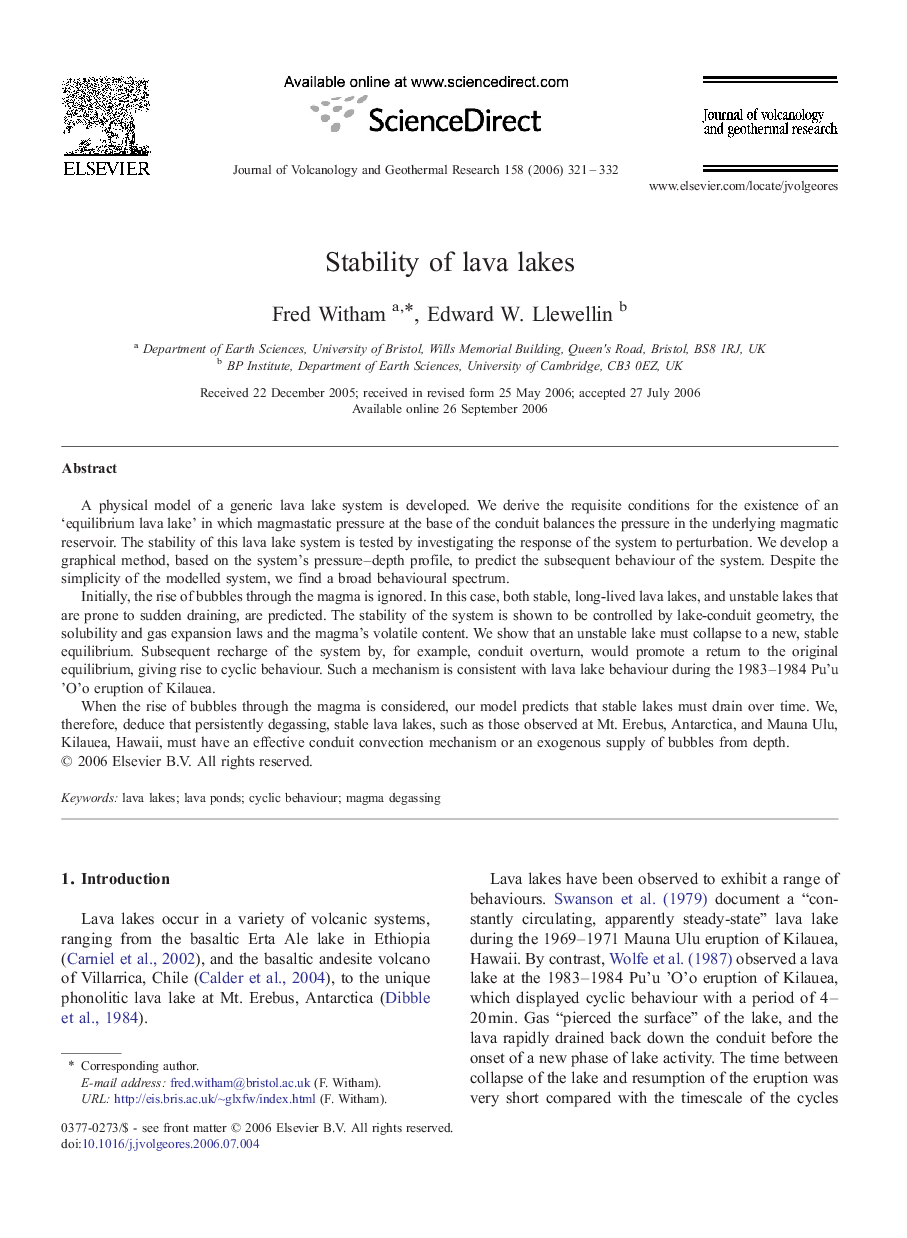| Article ID | Journal | Published Year | Pages | File Type |
|---|---|---|---|---|
| 4715009 | Journal of Volcanology and Geothermal Research | 2006 | 12 Pages |
A physical model of a generic lava lake system is developed. We derive the requisite conditions for the existence of an ‘equilibrium lava lake’ in which magmastatic pressure at the base of the conduit balances the pressure in the underlying magmatic reservoir. The stability of this lava lake system is tested by investigating the response of the system to perturbation. We develop a graphical method, based on the system's pressure–depth profile, to predict the subsequent behaviour of the system. Despite the simplicity of the modelled system, we find a broad behavioural spectrum.Initially, the rise of bubbles through the magma is ignored. In this case, both stable, long-lived lava lakes, and unstable lakes that are prone to sudden draining, are predicted. The stability of the system is shown to be controlled by lake-conduit geometry, the solubility and gas expansion laws and the magma's volatile content. We show that an unstable lake must collapse to a new, stable equilibrium. Subsequent recharge of the system by, for example, conduit overturn, would promote a return to the original equilibrium, giving rise to cyclic behaviour. Such a mechanism is consistent with lava lake behaviour during the 1983–1984 Pu'u 'O'o eruption of Kilauea.When the rise of bubbles through the magma is considered, our model predicts that stable lakes must drain over time. We, therefore, deduce that persistently degassing, stable lava lakes, such as those observed at Mt. Erebus, Antarctica, and Mauna Ulu, Kilauea, Hawaii, must have an effective conduit convection mechanism or an exogenous supply of bubbles from depth.
